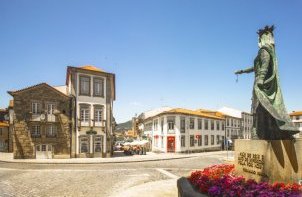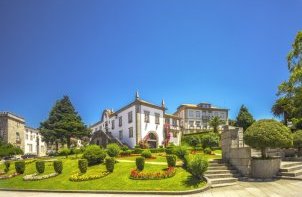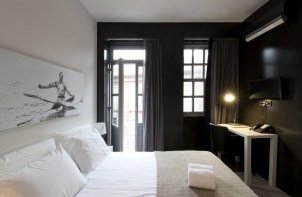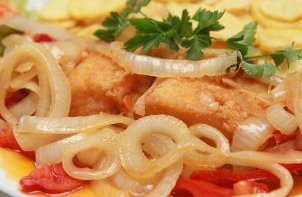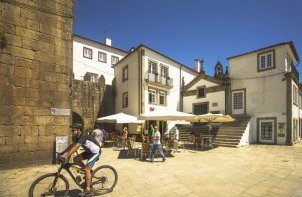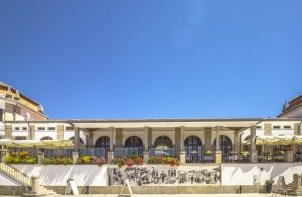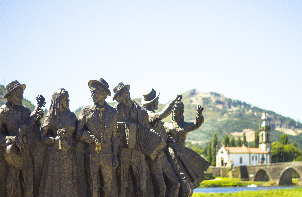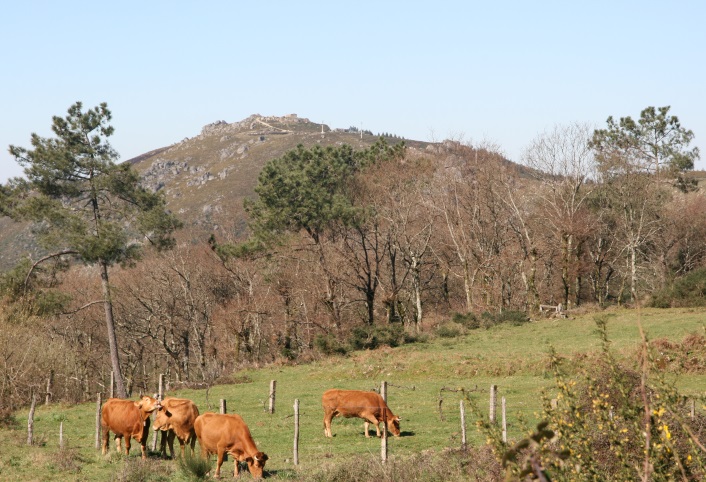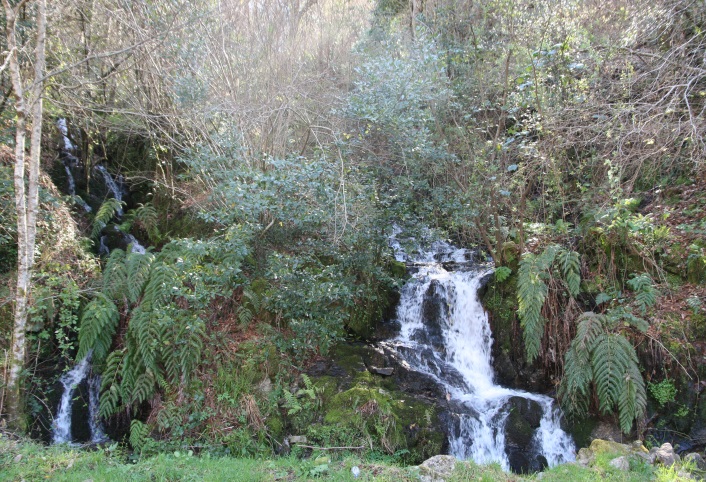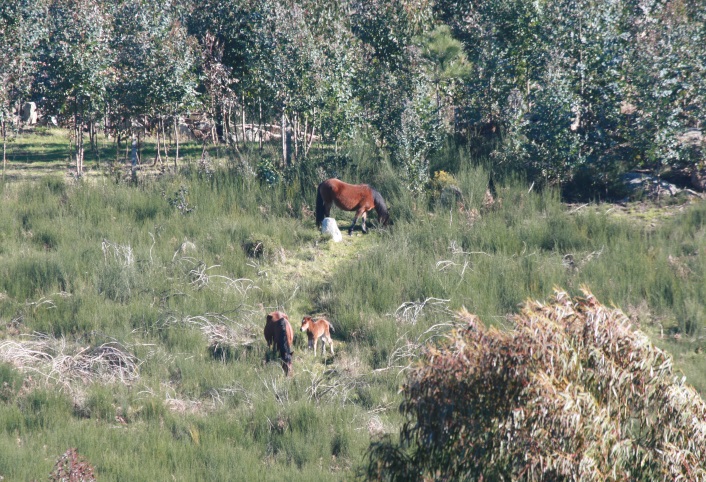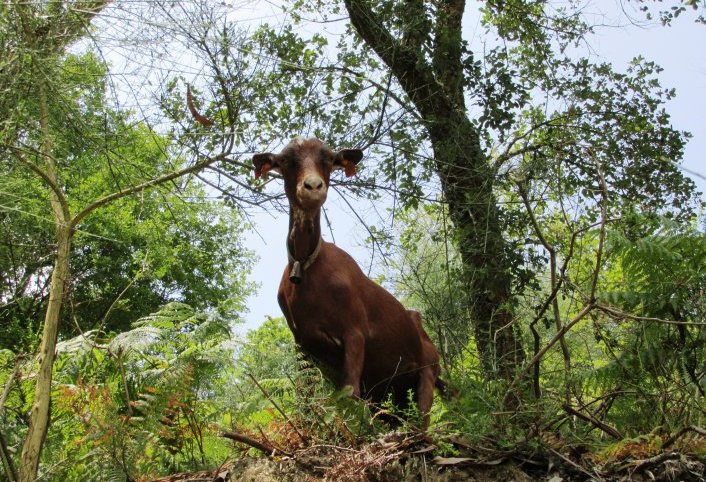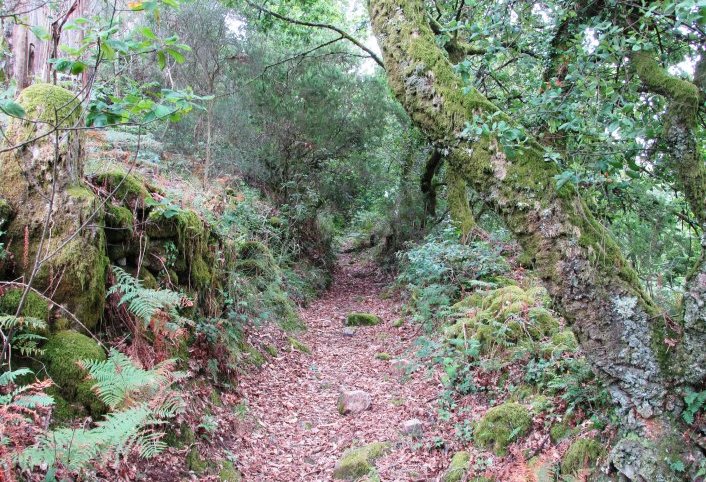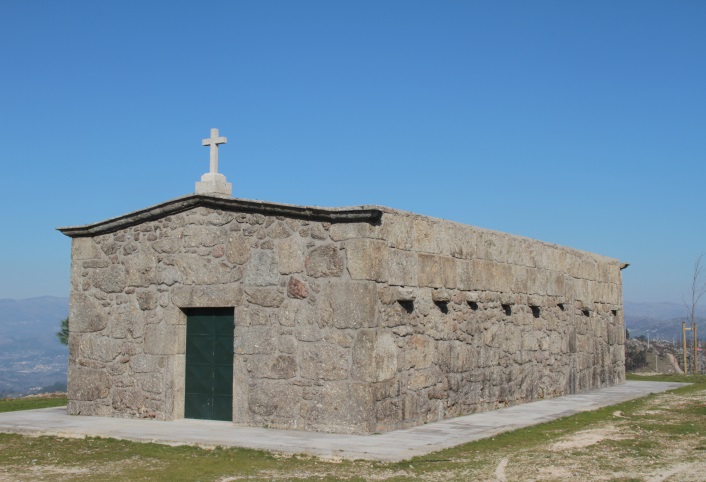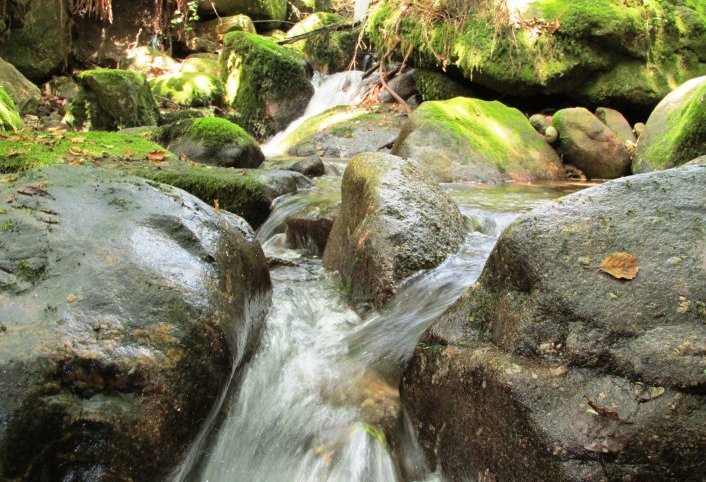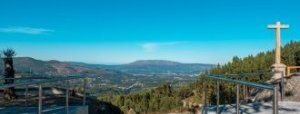The Carvalhal of Trovela Route
Avenida de São João de Confurco, Serdedelo 4990-760 Ponte de Lima
41° 44' 21,2" N | 8° 31' 13,0" W
Avenida de São João de Confurco, Serdedelo 4990-760 Ponte de Lima
Description
The Carvalhal of Trovela Route is a pedestrian route denominated of small route. The respective markings and signs comply with international standards. The route allows you to walk and contemplate one of the largest spots of oak trees existing in the municipality of Ponte de Lima, as well as observe, hear and feel the rich biodiversity associated.
We start the route in the water tank located next to National Road 307, which connects Arca to the Armada. We crossed the road to climb a path often used to drive goats to pasture areas. The area is dominated by uncultivated forests, where bushes appear, which are poor in biodiversity, but show great ecological importance in protecting soils against erosion.
When we intercept an asphalt road, we turn right, following it, towards the chapel of S. Lourenço da Armada. The hermitage, of simple appearance, rises in the middle of granite outcrops that surround a great castro, of which three orders of walls are clearly visible. The perspective, over the valley of Lima, is just the "appetizer" for the different and stunning scenarios that are obtained from the various points of the area surrounding the chapel.
We continue towards the Armada and, on the right side, a set of cliffs appears from where it is possible to contemplate the valley and the Carvalhal of the Trovela. The view is magnificent in the spring, with the vigorous green that the oak tree presents. The autumnal tones will certainly be responsible for creating a scenery worthy of the most beautiful canvases.
From the Armada, we head for the Boalhosa by a rail that intersect, in the winter, with a line of water. As you can see the villages have a typical organization of the altitude zones. These areas, characterized by an occupation of the agricultural soil with urban settlements, more or less concentrated, are surrounded by forest areas. The extension to be traveled, between villages, is dominated by the agroforestry mosaic. These environments, rich in marshes and natural forests, have high ecological and landscape value, housing a great diversity of species of flora and fauna but also domestic, in particular the native breeds.
At Boalhosa, we intersect an asphalted road again, next to the Parish Church of S. Estevâo, which we left soon after, taking the path to the right. We follow the route, through the heart of the village, where we can be "forced" to walk in the company of goats, sheep and cattle. Straw and grass straw weeds are common, traditional ways of storing / conserve dry food for cattle feed.
The village is behind us and we begin the descent until the river Trovela, having as permanent company, the oak tree. This type of ecosystem, which occupy a large part of the municipality, has exceptional natural values in itself, particularly with regard to species of fauna and flora. The initial extension will allow to accompany the edge of the oak tree until finally we enter inside and we are confronted with the real dimension and magic of the same.
After the descent, you will hear the sound of the water running on the Trovela river. We stopped a little, next to this water line, we recovered our breath and we began the ascent until the starting point of the route.
Download the file:


